Genre: Sports Developer: T&E Soft Publisher: Sega of Japan Players: 1-4 Released: 1994
Waialae no Kiseki (Waialae’s Miracle) was originally released on the Super Nintendo in the US as True Golf Classics: Waialae Country Club. It was ported to the Sega Mega Drive in Japan in early 1994 the month after Devil’s Course 3D Golf, which is also by T&E Soft. After reading the review of Devil’s Course here and looking at some gameplay, I can see they share more or less the same features and gameplay while having completely different courses.
I am at something of a disadvantage reviewing golf games of this period, as I didn’t play many. I have vague memories playing one or two DOS golf games, and I certainly remember Golf on the NES, but I played none of these for any significant amount of time. I do occasionally play the real game and enjoy the Everybody’s Golf series, as well as Nintendo’s Mario Golf, though these two series are a more arcade-like experiences than the simulation of most golf games.
The thing about golf video games, to which I would also add most sports and racing titles, is that with few exceptions they have gotten much better as technology has improved. The reason EA Sports titles become dirt cheap isn’t only related to their yearly release schedule but also the massive improvements brought in over time. This was especially so around the time that this title released as gaming was a short few years going full-3D.
This game, which I share hereafter call Waialae, is in most ways a typical golf title. The menus are all in Japanese, but the game includes tournament, skins match, stroke play, match play, and training options. There is also a helpful quick start option right at the top of the menu. These are all self-explanatory, though the training mode seems to just drop you into the game with no opponents and doesn’t offer any tutorial. There are some customizations for your character including the ability to select a caddie and name your player. Your name, as well as records and progress, are saved on the cartridge and the battery amazingly still worked on the cartridge I used.
Once you’re in the main game, much of the text and interface is in English, making things much easier to play for anyone importing this title. The mechanics are simple to understand with options to select your club, stance, direction, and a circular meter for selecting the power of your shot. Like with many golf games, this will require good timing. Once the power level is selected, a ball with a dot tracing along its surface is shown and a button push selects where the ball will be hit. On one occasion, I pulled off a power shot by getting the power meter to the max and hitting the ball right in the centre. Clubs and direction are usually selected automatically, but it’s often necessary to fine tune these as well as getting the stroke right. It is very necessary to check wind direction, and the weather and surface conditions also have an effect.
Once on the green, a grid is used to show elevation and distance, but once you go to shoot it will disappear meaning you’ll have to remember it when adjusting for your shot. The mechanics driving and on the green both work well but require practice to truly master. It’s often hard to know the right power level and just where to hit, though the game gives you decent indicators. Getting good requires trial and error, which is really no different to golf games produced today or indeed the real thing. I hit plenty of bogeys early on, but I was soon able to regularly make par along with the occasional birdie.
The presentation is quite good for the time. The music in particular is very catchy. There are also little touches like commentary from your caddie. Some of it comes off as backhanded, like when he congratulated me on my approach on my fifth stroke on a par four. There are also some other little touches like a “Tea Break” still screen after the ninth hole and digitized cheers after a particularly good putt.
What’s wrong with Waialae has little to do with the gameplay and a lot to do with its age. As with Devil’s Course, the game is slow as the stuttering introduction to each hole makes plain. Thankfully, this animation at least can be skipped, but the rest of the gameplay is still slow. The sad truth is with games like this is that no matter how good they were at the time, they rarely age well. This along with the language barrier makes this one that’s strictly for collectors and golf enthusiasts. I do want to balance this by stressing that Waialae seems to be well made from the standards of the time and my score is a little more generous because of this.
SCORE: 6 out of 10

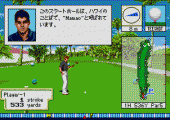
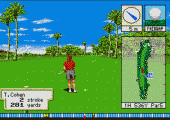
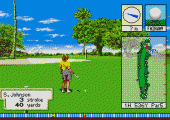
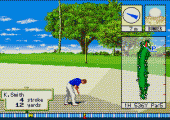
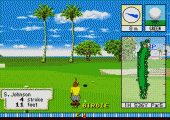
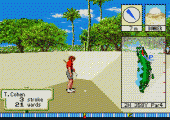
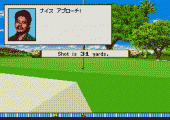
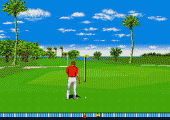
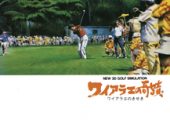
Pingback: Video Game Reviews and Articles | The Essential Malady
Pingback: Video Game Reviews & Articles | The Essential Malady